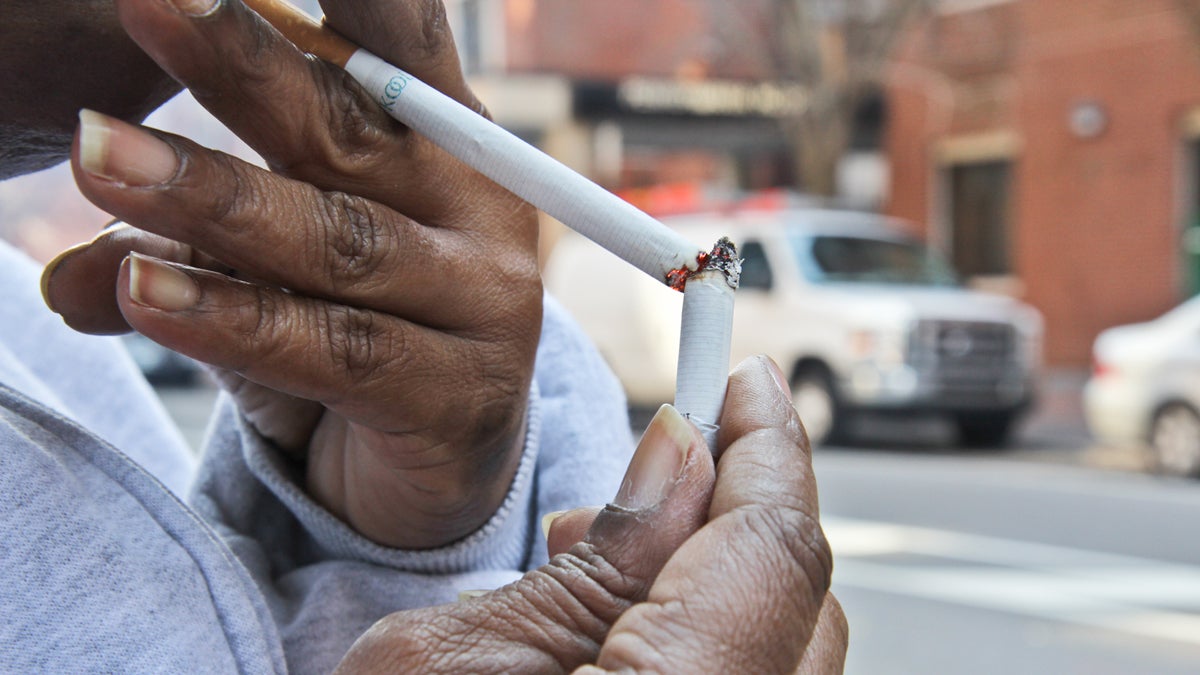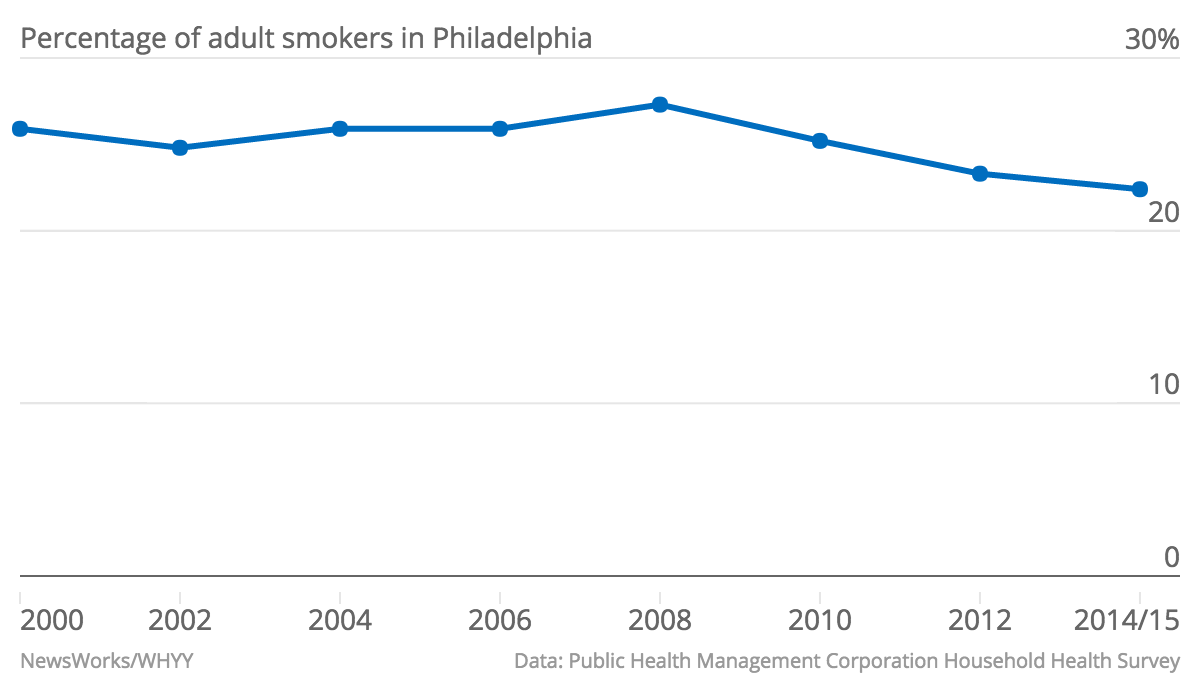Philadelphia’s smoking rate drops, but still stays higher than other major cities

According to new data, 25.8 percent of African-Americans smoke in Philadelphia, compared with 21.4 percent of whites and 19.1 percent of Hispanics. (Kimberly Paynter/WHYY)
Throughout the 2000s, the number of Philadelphia smokers remained stubbornly high, regularly topping a quarter of the adult population. A new survey of the city shows the number is continuing its slow decline, and has fallen to 22.4 percent.
Deborah Brown of the American Lung Association of the Mid-Atlantic credited the city’s comprehensive tobacco control program for the drop.
“The city has put into play so many measures,” she said. “It takes a while, sometimes, for those measures to really make a difference. And I think that we’re starting to see that difference pay off.”

In its first push, Philadelphia passed the Clean Indoor Air Worker Protection Law in 2008. Two years later, the city’s department of public health began a mass media campaign through its Get Healthy Philly initiative, telling residents the dangers of cigarettes and providing tips on how to quit. State and federal per pack taxes also rose.
Since those policies began, Ryan Coffman, the city’s tobacco policy and control manager, said smoking declined by 18 percent for adults and 30 percent for teens. “This results in about 60,000 fewer smokers in the city,” he said. “This is scores of Philadelphians who are now living longer, fuller, healthier, happier lives being tobacco free.”
Despite improvements, Philadelphia still has the highest smoking rate of the 10 largest U.S. cities, about 10 percentage points more than Los Angeles, and four points more than the Bronx or Chicago.
The survey, conducted over the phone in late 2014 and early 2015 by the non-profit Public Health Management Corporation, did not assess e-cigarette popularity. It found that a third of those with mental health conditions and more than 30 percent of low-income Philadelphians smoked.
“While we’re very encouraged by the results that we’ve seen in this recent data, it also highlights areas where we’re going to be redoubling our efforts,” said Coffman.
That includes continuing to work with the Philadelphia Housing Authority to cut cigarette use among residents, and offering counseling and treatment to support tobacco cessation for those seeking mental health services through the nonprofit Community Behavioral Health.
Coffman hopes the city’s $2-a-pack tax will continue to propel the reduction. In a promising early sign, calls to the state’s free quitline doubled after the tax was introduced.
WHYY is your source for fact-based, in-depth journalism and information. As a nonprofit organization, we rely on financial support from readers like you. Please give today.

